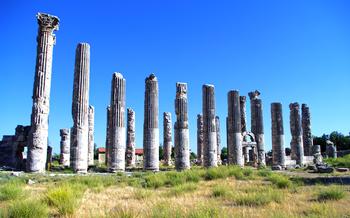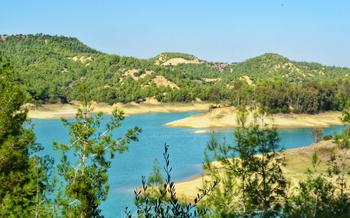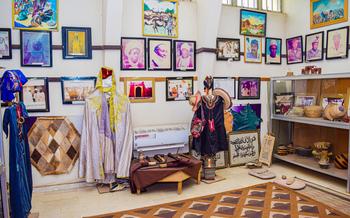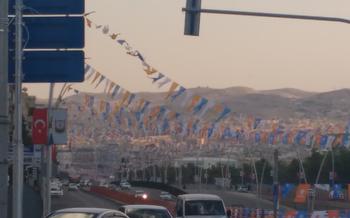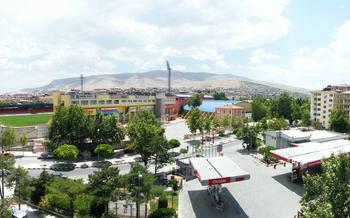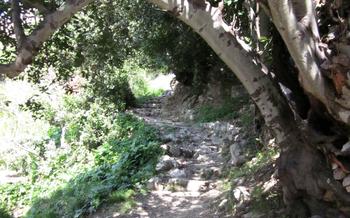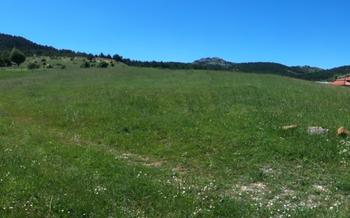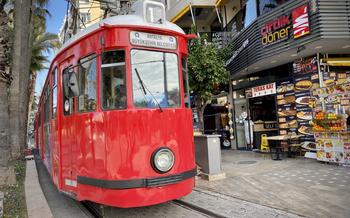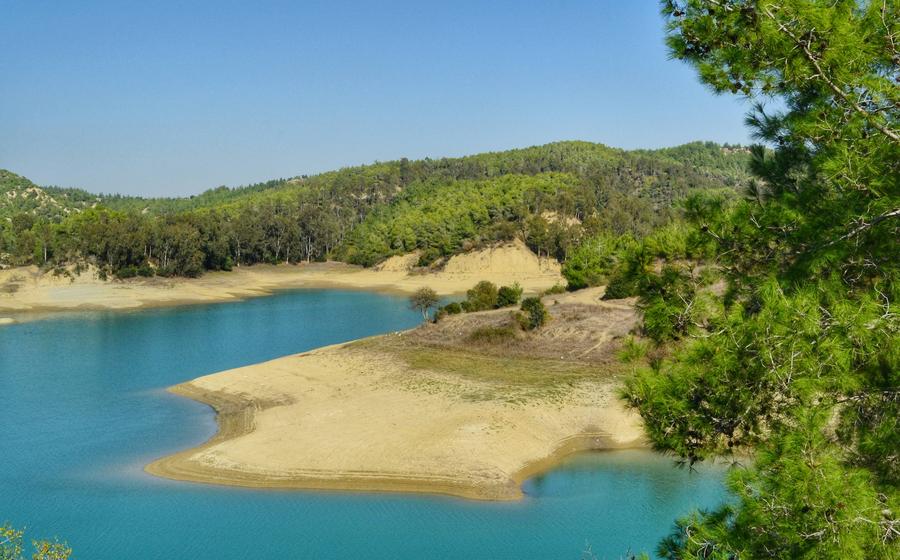
Ancient City of Diocaesarea Olba
- Exploring the Ruins:
- The Amphitheater: A Stage for Ancient Performances
- The Temple of Zeus
- The Necropolis
- The Agora: Marketplace and Social Gathering Place
- The Byzantine Church
- Local Cuisine
- Accommodation Options
- Transportation
- Guided Tours
- Insider Tip: Hidden Gems and Off-the-Beaten-Path Experiences
Exploring the Ruins:
Step through the gates of time as you traverse the remnants of Diocaesarea Olba, an ancient city that once thrived in the heart of the Taurus Mountains. The city's ruins, remarkably preserved despite the relentless passage of centuries, offer a glimpse into a bygone era of grandeur and architectural prowess.
Explore the intricate layout of the ancient city, where streets and alleys intersect, leading to a myriad of remarkable structures. Admire the well-preserved city walls, which once stood as a formidable defense against invaders. Marvel at the imposing gateways that served as grand entrances to this once-bustling metropolis.
Among the notable structures that dot the landscape of Diocaesarea Olba, the towering Temple of Zeus stands as a testament to the city's religious devotion. With its intricate carvings and majestic presence, the temple offers a glimpse into the spiritual beliefs and practices of the ancient inhabitants.
Discover the well-preserved remains of the amphitheater, a testament to the city's vibrant cultural life. Imagine the roar of the crowd as gladiators clashed in epic battles or actors brought ancient tales to life on the stage. The amphitheater's acoustics, meticulously designed to amplify even the faintest whisper, transport visitors back in time to an era of captivating performances.
Unearth the secrets of the necropolis, the ancient burial ground, where elaborate tombs and mausoleums stand as silent guardians of the city's past. Explore the various types of tombs, from simple graves to grand family vaults, each offering insights into the funerary practices and beliefs of Diocaesarea's inhabitants.
Walk along the remnants of the aqueduct, an engineering marvel that once brought life-sustaining water to the city. Admire the ingenuity of the ancient builders as you trace the course of this vital infrastructure, which played a crucial role in the city's agriculture and daily life.
In the heart of the ancient city, the agora, or marketplace, bustled with activity in days gone by. Here, merchants displayed their wares, shoppers bartered for goods, and locals gathered to socialize and exchange news. Explore the remnants of shops and stalls, imagining the vibrant atmosphere that once filled this bustling commercial center.
As you wander through the ruins of Diocaesarea Olba, let your imagination soar and embrace the spirit of the past. Each stone, each fragment, and each inscription tells a story, inviting you to piece together the rich tapestry of life in this ancient city that once stood as a beacon of civilization amidst the rugged beauty of the Taurus Mountains.
The Amphitheater: A Stage for Ancient Performances
Size and Capacity:
The amphitheater of Diocaesarea Olba is a remarkable structure that stands as a testament to the city's grandeur. Its imposing size and impressive capacity make it one of the largest and well-preserved theaters in the region. With a seating capacity estimated to accommodate over 10,000 spectators, the theater provided ample space for the local population and visitors to gather and enjoy various performances.
Purpose and Significance:
The amphitheater served as a central venue for entertainment and civic events in ancient Diocaesarea. It hosted a wide range of spectacles, including gladiatorial contests, theatrical performances, musical concerts, and public assemblies. These events played a crucial role in the social and cultural life of the city, providing opportunities for the community to come together, celebrate, and share in the excitement of the performances.
Acoustic Features and Performances:
One of the remarkable aspects of the Diocaesarea amphitheater is its exceptional acoustics. The theater's design, with its carefully positioned seating tiers and curved walls, creates an environment where sound is naturally amplified and reverberates throughout the space. This acoustic marvel allowed performers to be heard clearly from all corners of the theater, enhancing the audience's enjoyment of the performances.
The Temple of Zeus
The Temple of Zeus stands as a testament to the religious devotion and architectural prowess of Diocaesarea's ancient inhabitants. Constructed in the majestic Ionic style, the temple's grand facade and intricate details captivate visitors. Its imposing columns, adorned with intricate carvings, support a pediment that once housed impressive sculptures depicting scenes from Greek mythology.
Dedicated to Zeus, the king of the gods, the temple served as a central place of worship for the city's population. Within its sacred walls, priests performed rituals and sacrifices to honor the deity, seeking his favor and protection. The temple's design and iconography reflect the deep connection between the people of Diocaesarea and the Olympian gods, providing a glimpse into their religious beliefs and practices.
The Temple of Zeus also served as a symbol of the city's wealth and power. Its grandeur and opulence showcased the prosperity and cultural achievements of Diocaesarea, attracting visitors and pilgrims from across the region. Today, the temple stands as a poignant reminder of the city's glorious past, inviting visitors to step back in time and experience the grandeur of ancient Greece.
The Necropolis
The necropolis, or burial ground, of Diocaesarea Olba is located just outside the city walls, on a hill overlooking the surrounding landscape. It is a vast and impressive sight, with hundreds of tombs of various sizes and shapes scattered across the hillside. The tombs are mostly rock-cut, with some having elaborate facades and inscriptions.
Archaeological excavations have revealed a variety of burial practices at the Diocaesarea necropolis. Some tombs were simple pits or chambers, while others were more elaborate, with multiple rooms and niches for multiple bodies. Some tombs also contained valuable artifacts, such as jewelry, pottery, and weapons, which were buried with the deceased to accompany them into the afterlife.
The inscriptions found in the tombs provide valuable insights into the lives and beliefs of the people of Diocaesarea. Many of the inscriptions are in Greek, but there are also some in Latin and Aramaic. They record the names of the deceased, their occupations, and their family relationships. Some inscriptions also include prayers or expressions of grief.
The necropolis of Diocaesarea Olba is a fascinating and evocative place that offers a glimpse into the funerary practices and beliefs of the ancient city's inhabitants. It is a must-visit for anyone interested in the history and culture of this ancient city.
The Agora: Marketplace and Social Gathering Place
The ancient city of Diocaesarea Olba was not just a political and religious center; it was also a thriving hub of commerce and social interaction. The agora, or marketplace, played a crucial role in the daily lives of the city's inhabitants, serving as a place to buy and sell goods, exchange news and ideas, and socialize.
Located in the heart of the city, the agora was a large, open square surrounded by shops, stalls, and other commercial establishments. Merchants from across the region would gather here to trade a wide variety of goods, including agricultural products, textiles, pottery, and metalwork. The agora was also a place where people could come to find services such as money changing, banking, and legal advice.
In addition to its economic importance, the agora was also a significant social gathering place. People would come here to meet friends, catch up on the latest news, and participate in political discussions. The agora was also the site of religious festivals, public assemblies, and other civic events.
The agora of Diocaesarea Olba is a well-preserved example of an ancient marketplace. The foundations of many of the shops and stalls are still visible, and the square is still surrounded by a number of impressive public buildings, including the bouleuterion (council chamber) and the stoa (covered walkway). Visitors to the city can easily imagine the bustling activity that once took place in this vibrant and lively space.
The Byzantine Church
The Byzantine Church, a testament to the rich religious history of Diocaesarea, stands as a symbol of the city's enduring heritage. Built during the Byzantine era, this architectural marvel boasts intricate stonework, arched doorways, and a captivating blend of Byzantine and Romanesque styles.
Step inside the church to immerse yourself in its serene atmosphere. Admire the well-preserved frescoes that adorn the walls, depicting biblical scenes and religious figures with vibrant colors and intricate details. The church's domed ceiling adds to its grandeur, creating a sense of awe and inspiration.
As you explore the church, take a moment to reflect on its historical significance. Imagine the devout worshippers who once gathered within these walls, seeking solace and spiritual guidance. The Byzantine Church offers a glimpse into the religious beliefs and practices of a bygone era, making it a poignant reminder of Diocaesarea's enduring legacy.
Today, the Byzantine Church stands as a testament to the city's resilience and the enduring power of faith. It serves as a reminder of the cultural and religious diversity that has shaped the region throughout the centuries, making it a must-visit attraction for anyone interested in the history and heritage of Diocaesarea.
Local Cuisine
Adana, renowned for its culinary prowess, beckons you to savor its delectable dishes. Discover the city's signature dish, the Adana kebab, a tantalizing skewer of minced lamb grilled to perfection, seasoned with an aromatic blend of spices. Indulge in the flavors of meze, a delightful array of small plates, each bursting with unique flavors. Try the lahmacun, a crispy flatbread topped with minced meat, tomatoes, and herbs, or the içli köfte, savory bulgur dumplings filled with minced meat and spices.
For a taste of local delicacies, head to the bustling Kazancılar Çarşısı, a vibrant bazaar lined with food stalls and restaurants. Sample the irresistible şalgam suyu, a tangy turnip juice, and cleanse your palate with a refreshing glass of ayran, a yogurt-based beverage. Don't miss the opportunity to savor Adana tatlısı, a sweet pastry drenched in syrup, the perfect ending to your culinary adventure.
Accommodation Options
Diocaesarea offers a range of accommodation options to suit different preferences and budgets. Whether you're seeking a luxurious stay, a charming guesthouse, or a cozy homestay, you'll find something to meet your needs.
For those who prefer a touch of luxury, the Hotel Adana offers elegant rooms, a swimming pool, and a spa. The Divan Adana is another excellent choice, with spacious rooms, fine dining options, and a fitness center. For a more affordable yet comfortable stay, consider the Ramada Plaza Adana or the Adana HiltonSA Hotel. These hotels offer comfortable rooms, modern amenities, and convenient locations.
If you're looking for a more authentic experience, opt for a guesthouse or homestay. The Old City Guesthouse offers charming rooms with traditional Turkish décor, while the Adana Homestay provides a unique opportunity to immerse yourself in local culture and daily life.
When choosing your accommodation, consider factors such as location, amenities, and budget. If you're on a tight budget, look for hostels or guesthouses that offer dorm-style rooms or shared accommodations.
Insider Tip: For a truly unforgettable experience, consider staying in a renovated historical mansion in the heart of the old city. These mansions offer a glimpse into the city's rich history and provide a unique and atmospheric place to stay.
Transportation
To reach Diocaesarea from the heart of Adana, various transportation options are at your disposal. The most convenient choice is hopping on the local public transportation network. Buses bound for Diocaesarea depart from the main bus terminal and take approximately 45 minutes to an hour to reach the ancient city. These buses offer a budget-friendly and reliable way to get there.
If you prefer a more flexible option, consider renting a car. This allows you to explore Diocaesarea at your own pace and visit nearby attractions. Car rental agencies are available at Adana Airport and in the city center. Just be sure to have an international driver's license and be prepared for left-hand traffic.
Alternatively, you can hire a taxi for a more personalized experience. Taxis are readily available in Adana, and the journey to Diocaesarea typically takes around 30 minutes. Agree on a fare beforehand to avoid any surprises.
Whichever mode of transport you choose, getting to Diocaesarea is a breeze, ensuring a seamless journey to this ancient treasure.
Guided Tours
Exploring Diocaesarea with a knowledgeable guide can greatly enhance your visit. These experienced professionals can provide historical context, point out hidden details, and share stories about the ancient city. Several tour operators and agencies in Adana offer guided tours of Diocaesarea.
When choosing a tour, consider your interests and budget. Some tours focus on the main highlights, while others delve deeper into specific aspects of the city's history and culture. Prices vary depending on the length and scope of the tour.
To get the most out of your guided tour, come prepared with questions and an open mind. Engage with your guide and ask for recommendations on other attractions and activities in the area. Remember to wear comfortable shoes, bring water, and protect yourself from the sun.
Insider tip: For a truly immersive experience, consider booking a private tour. This allows you to customize the itinerary based on your interests and go at your own pace.
Insider Tip: Hidden Gems and Off-the-Beaten-Path Experiences
Beyond the main attractions of Diocaesarea, there are hidden gems and off-the-beaten-path experiences waiting to be discovered. Venture beyond the city walls to explore lesser-known ruins and natural wonders. Discover the secluded Temple of Artemis, nestled amidst a tranquil olive grove, or climb to the top of Mount Ali for breathtaking panoramic views of the ancient city and the surrounding countryside.
For a truly unique experience, venture off the main tourist trails and explore the surrounding villages. Immerse yourself in the local culture by visiting traditional markets, sampling regional delicacies, and interacting with the friendly locals. Take the time to learn about their way of life and gain a deeper understanding of the region's history and traditions.
To avoid the crowds and explore Diocaesarea at your own pace, consider visiting during the shoulder season (spring or fall) or on weekdays. This way, you can enjoy a more intimate and authentic experience, without the hustle and bustle of peak tourist season.
